You are here
This section of the Upper Merced River has historically been closed to boaters. Now, due to the collaborative efforts of the National Park Service and American Whitewater, the new Merced River plan that was adopted in 2014 allows boaters to register and get wilderness permits to run the headwaters of the Merced through Little Yosemite Valley in Yosemite National Park.
The trip to the Merced headwaters is well worth the effort, and it should be noted that there is no easy access to these sections of the Merced. Boaters have to hike upstream from Yosemite Valley and take-out at Little Yosemite Valley, as no boating is allowed below Little Yosemite Valley to the Main Yosemite Valley floor. There are a number of access trails that each have their pros and cons, so make sure to research what trail looks best for your group beforehand to pick your route.
Boaters must obtain wilderness permits and register to boat this section. The wilderness permits are sometimes difficult to get for this area depending on visitor traffic and your group size. It helps to research strategies to increase your chances before driving to Yosemite Valley.
Quick Permit Tips:
- Wilderness permits must be obtained the day before your trip, and the office opens at 11 a.m.
- Hikers recommend arriving as early as possible (some say as early as 3 a.m.; however, some are able to obtain permits as late as 9:30 a.m.).
- Seasonal traffic heavily will impact availability. These permits can be difficult to get, as the park strictly limits the number of groups allowed to hike, boat and camp in the area per day.
- The cost is $30 to enter the park, and the backcountry permit is free.
- Permits allow for more than enough days in the park to kayak the river (Three nights is the minimum you should request).
- Whichever permit you get, plan on hiking around 15 miles to reach the put-in. Some will choose to break this hike up into two days, with the option to add some paddling on the second day. At the end of the trip, there is a mandatory 4-mile hike out around Nevada and Vernal Falls down to the valley floor.
River Information
The Merced headwaters run is split into two sections by Merced Lake, and how much of this stretch is run is likely determined by which permit you can acquire. If you have a permit that requires hiking in from Glacier Point or Happy Isles, it makes the most sense to paddle from Merced Lake down. This stretch has the most bang for your buck, but it misses out on some of the rapids upstream of Merced Lake.
If your permit has you hiking in from Tenaya Lake or using the Rafferty Trail, adding the sections above Merced Lake may be more appealing. Either way, you will exit through Little Yosemite Valley and have a 4-mile hike down to the valley floor at the end of the trip. Shuttle buses are available to return you from the valley floor to the trailheads, but be aware that these do fill up, and consider reserving a spot in advance.
Section 1: Lyell Fork into Merced Lake
The upper section starts near the Lyell Fork confluence at a footbridge. From here there are a few hundred yards of floating before the first slides, where a small ledge proceeds a set of three rapids. The second of these rapids has a log duck followed by some smooth slides, and the third piles into the left wall.
The first large rapid of the run is a short ways downstream, named Blazing White Sun Fire. This slide to falls has been run starting on the left and moving to the right, but be wary of the bounce at the lip and the rocks in the landing. Between here and Washburn Lake there are a couple of fun, unique bedrock rapids separated by flat water floating. The largest of these is a beautiful 9-foot vertical drop where you duck under an old log.
The first gorge below Washburn Lake starts with a series of mellow slides that ramp up for a bit before the river pinches down at Tuck and Weave. Tuck and Weave is a significant pocket rapid proceeded by some log ducks.
Some mellow floating leads into the Asylum, an area where the river splits into two channels, both of which are Class V+/VI. Just above the split, the river drops over a sketchy 12-footer, then a friendly slide. Just below the slide is the split, where the right side enters an unrunnable cascade and the left side roars through some messy Toxaway-esque cascades as well. The first slide in the left channel is high risk, and the second is not runnable. The entire Asylum can be portaged easily via the trail, and you can put-in just below the reconsolidation of the two channels.
There is some more mellow floating below here down to a small ledge at a horse gate. Downstream of here there is a TON of wood all the way down to the gorge above Merced Lake. You can either continue and play the over/under game or portage this section along the trail, down into the campground. It is so beautiful in here that you will hardly notice the extra work.
The gorge just above Merced Lake has been christened Gorge Lucas. Merced Lake separates the upper stretch from the lower section.
Section 2: Merced Lake through Little Yosemite Valley
Some may choose to only run this section because it means less hiking with gear and it may have the best “bang for your buck,” though it misses the rapids above Merced Lake. If this section is all that your group desires and you are able to acquire the correct permit (Glacier Point or Happy Isles to Little Yosemite Valley), it is possible to hike 8 miles and camp at the base of Moraine Dome next to the final cascade the first night. This makes it possible to leave overnight gear at camp and finish the hike the next day with lighter packs.
Take note that to leave overnight gear you must either have a bear bin or camp at Merced Lake.
There are two gorges in this section that don’t allow for conventional portaging once entered, and these can both be scouted on the hike up if you come through Little Yosemite Valley (as opposed to hiking in from above on the Clouds Rest or Rafferty trails). These gorges can be portaged in their entirety on the trail. In this section there are three slides around 50 feet tall that are smooth and fun. At high flows the seriousness of these drops increase. If in doubt, paddle the left side of any islands for the cleanest route. While usually only Class III, they can be rocky and may have wood.
There are three main gorges below Merced Lake. The one exiting Merced Lake has a high fun factor and is named Echo Gorge. If there are any planes flying overhead or thunderstorms passing through while you are in the area, you will understand why the gorge has earned this name. Echo Gorge starts and ends with large, smooth slides. The rest of the gorge between these two slides has a Class IV+ feel and contains numerous 5- to 15-foot ledge/slides.
You'll pass an island below Echo Gorge before meeting the congenial Lost Valley of the Merced. A footbridge at the end of this valley marks the start of the most difficult and longest gorge. Storm Warning is the set of three rapids below the footbridge. All of these are runnable, but they can be portaged along the trail or at river level with varying degrees of difficulty. At the end of Storm Warning is a pool where the river turns right; the trail is easily attainable from here if you decide you will not run the gorge. If you choose to run the gorge, make sure you are comfortable with the exit move at Hard Twist before committing yourself to this section. The main gorge starts with a series of slides containing a sticky hole that can be portaged on the left followed by a set of boulder rapids as the Merced nears the heart of the gorge. This gorge comes to a crux at Sphynx's Gate, where the gorge walls rise vertically and commit boaters to what is downstream. Egress is possible on river left just before Sphynx’s Gate, where a serious hole with limited safety options awaits. One more twisting rapid lies between Sphynx’s Gate and the exit rapid in the gorge known as Hard Twist. Hard Twist is a two-part rapid. First, there is a difficult bedrock falls with an eddy that must be caught on the right; then there is an as-of-yet-unrun pile of boulders that pinches violently into a crack. After catching the eddy below the first part of Hard Twist, a friction climb is required along the river-right wall around the second part.
As the trail meets up with the river below Hard Twist, the river enters a straightaway full of boulder rapids that can be scouted from the trail on the left or the bank on the right. Be sure to scout thoroughly for wood. The boulder gardens end just above Paradise Slide, a two-part low-angle slide just above a possible camp site at an island. This campsite is up and to the right from the end of this pool.
Just downstream of the Island is a set of three rapids. The first is a sieved out slot that is runnable, but it best portaged left. The second is a fun 10-foot boof off an arrow shaped rock, and the third is a boof onto a slide where a dangerous pocket awaits those who fail to get right.
Around the corner is a ledgy rapid with a couple of necessary eddies before Fear, a difficult triple drop rapid without conventional safety options. Running Fear lands paddlers in Bunnell Gorge, where a deceptively tricky boulder garden and small ledge lead into the Bunnell Cascade. Scout the entire gorge from the trail before entering. Bunnell Cascade is one of the signature drops on the run, a 10-foot ledge landing on a 50-foot slide best run hard left at the top. It is possible to portage the gorge and still run the Cascade.
After Bunnell is another island that can collect wood, then a Class III to Class IV section above the final Cascade at camp. This final cascade near the campsite has a small rapid leading into it; the river then flows over an ultra smooth and fast, 50-foot-tall slide. The best line is just to the right of an obvious rooster tail near the top, and its an easy walk up on river right to do it again! The campsite exists just below this drop on river right.
Exiting the pool below the campsite Cascade, take the left channel, which will lead to Little Yosemite Valley. There are a couple of miles of flatwater floating with major scenery points and a few log portages before ending the paddling portion of the trip just before the whitewater picks up again and enters a gorge that is off limits to paddlers. At this point, load up and begin your hike out; it is not legal to paddle any portion of the river from here to the Yosemite Valley.
The John Muir Trail is highly recommended over the Mist Trail for kayakers with backpack systems.
Flows:
- The slides can be run higher than the gorges, so the gorges are the limiting factor. However, if you are okay with potentially portaging the gorges, slightly higher runs can be done.
- 420 CFS is thought to be on the high side of good for the lower gorges, but it makes the top sections excellent. 350 CFS is pushy, and 250 CFS is considered a friendly level.

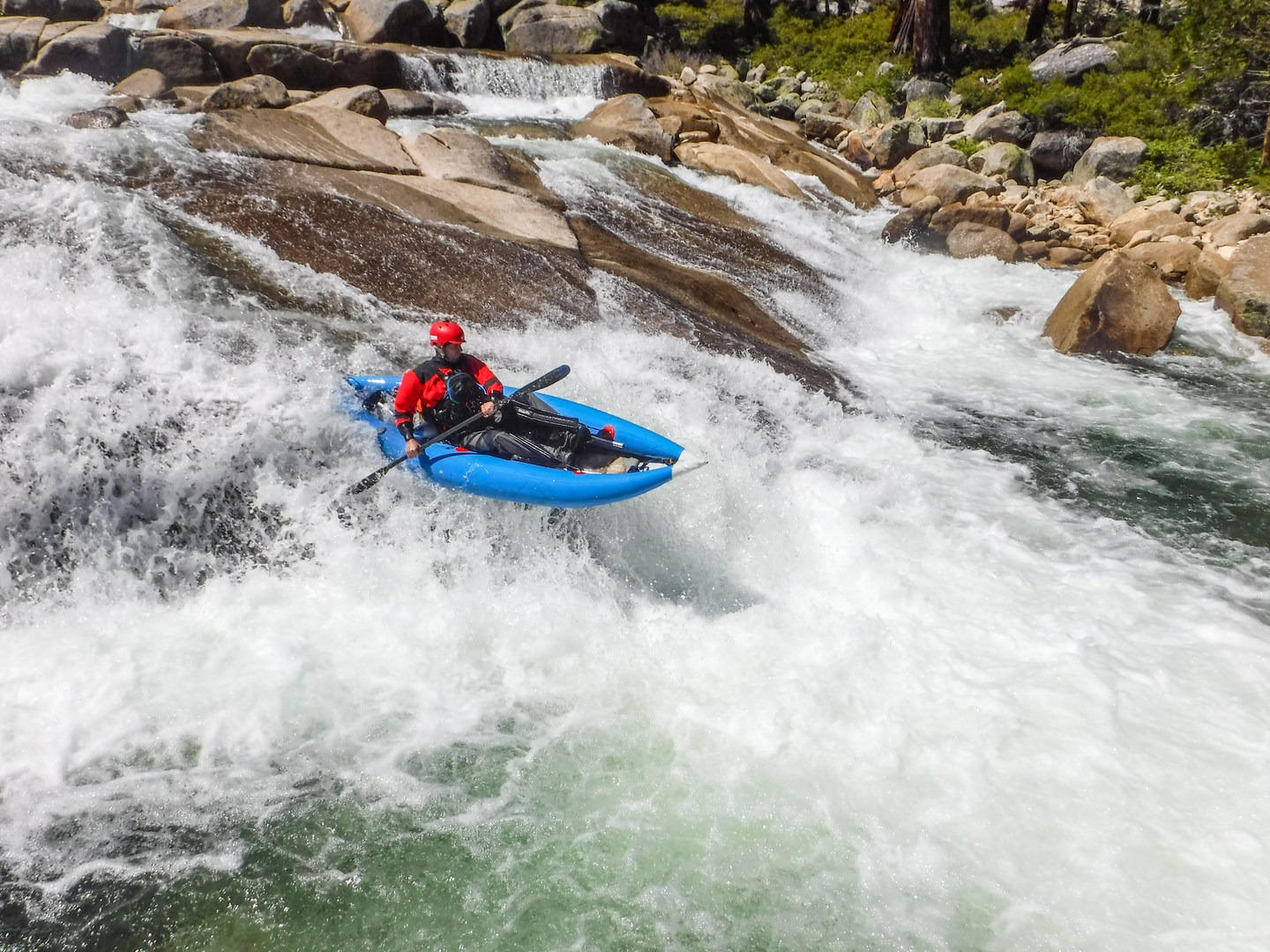
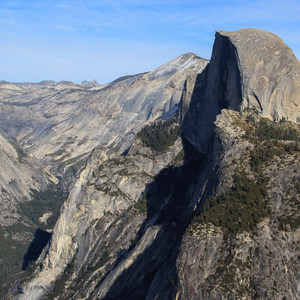

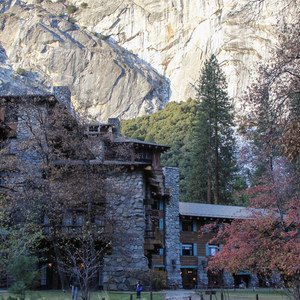
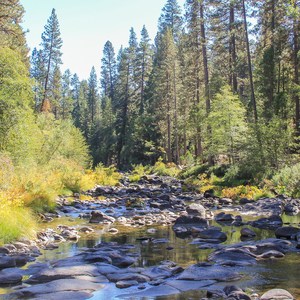

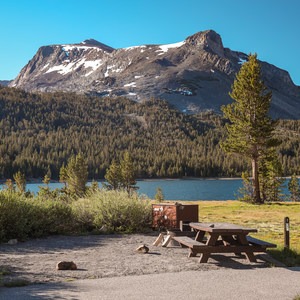


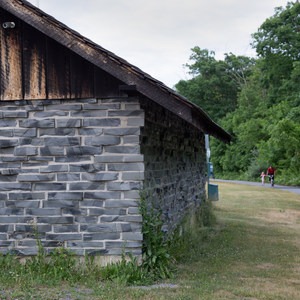
Comments
Sign In and share them.